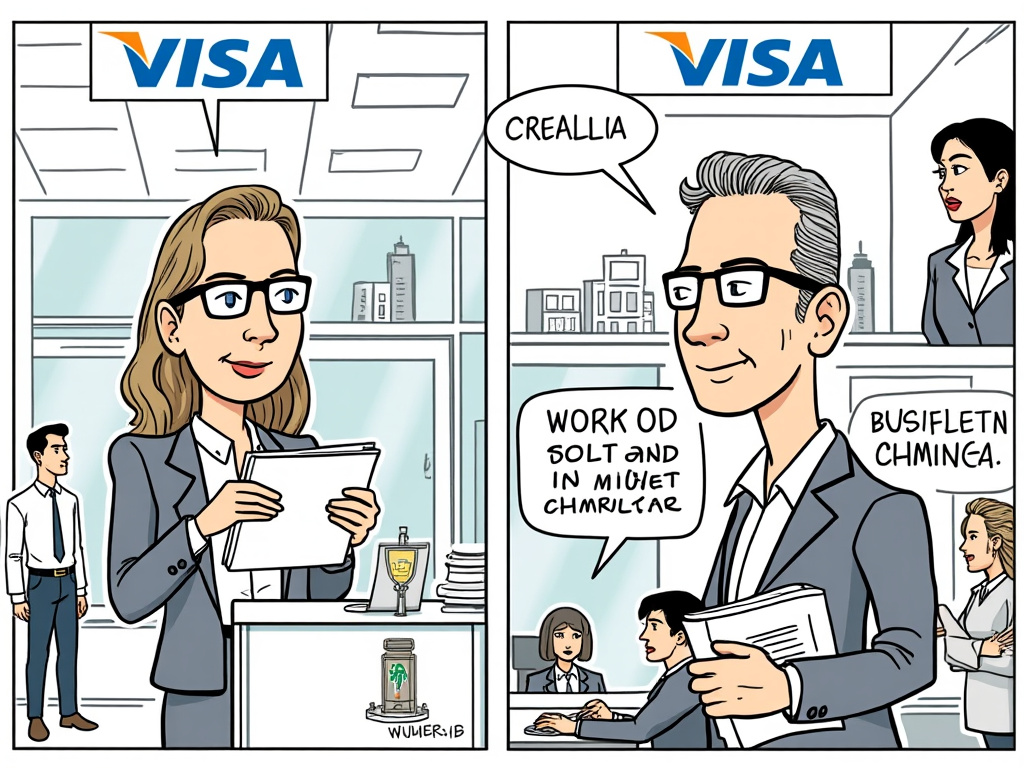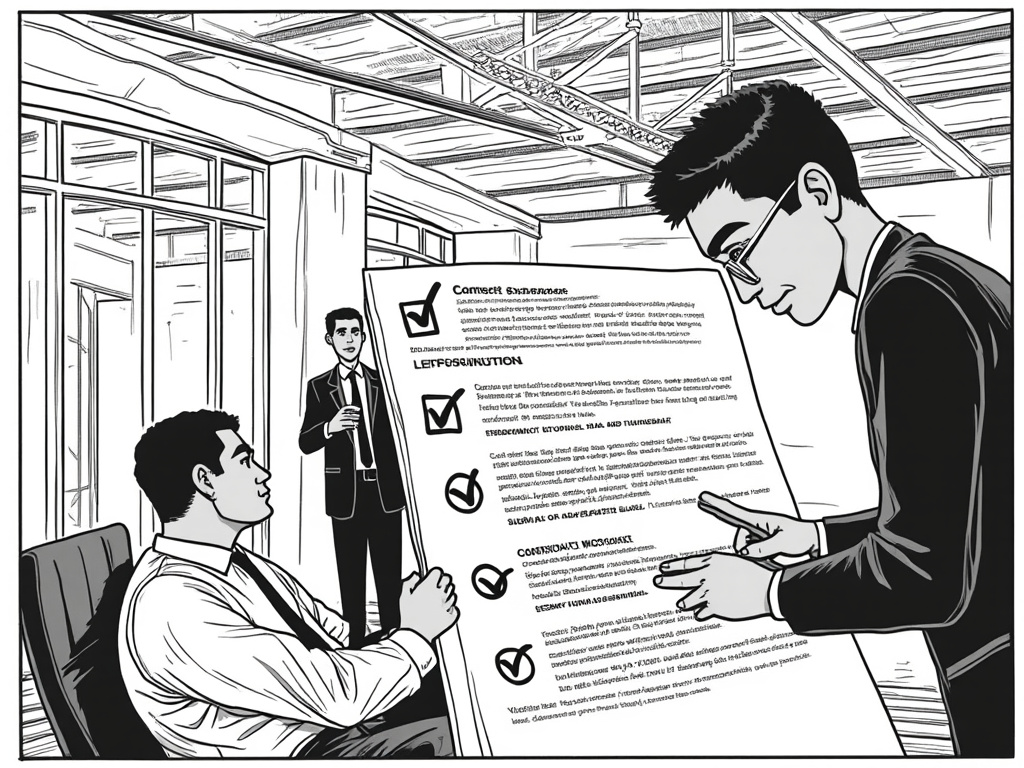
Global Mobility: Work and Student Visas vs. Investment Immigration Routes
Reading time: 12 minutes
Table of Contents
- Introduction: Charting Your Global Path
- Work Visa Pathways: The Career-Driven Approach
- Student Visa Opportunities: Education as Your Gateway
- Investment Immigration: Buying Your Way In?
- Head-to-Head: Comparing Your Options
- Real-World Navigation: Success Stories and Cautionary Tales
- Common Roadblocks and How to Overcome Them
- Your Decision Framework: Matching Routes to Life Goals
- Frequently Asked Questions
Introduction: Charting Your Global Path
Standing at the crossroads of global mobility? You’re not alone. Every year, millions face the same pivotal question: what’s the most strategic path to international relocation? Whether driven by career ambitions, educational aspirations, or investment opportunities, the route you choose shapes not just your immediate future, but potentially generations to come.
Here’s the unvarnished truth: there’s no universal “best” immigration pathway—only the most suitable route for your specific circumstances. While work and student visas might offer accessibility and lower initial costs, investment routes can provide expedited processing and fewer ongoing compliance requirements. The key lies in aligning your selection with your long-term objectives, financial capacity, and tolerance for bureaucratic processes.
Throughout this guide, we’ll dissect these pathways with surgical precision, offering you the comparative insights needed to make an informed decision that resonates with your unique situation. Let’s transform this complex decision into a clear strategic choice.
Work Visa Pathways: The Career-Driven Approach
Skilled Worker Visa Frameworks
Work visas represent the traditional immigration highway—merit-based pathways that leverage your professional expertise as your entry ticket. Countries worldwide are engaged in the global talent hunt, particularly for professionals in STEM fields, healthcare, and specialized trades.
Take Germany’s EU Blue Card system, which offers streamlined immigration for qualified professionals earning at least €56,400 annually (2023 figures) or €43,992 in shortage occupations. Similar frameworks exist across developed economies, from Canada’s Express Entry to Australia’s Skilled Independent Visa.
The primary advantage? Accessibility and immediate income. Unlike investment routes requiring significant capital upfront, work visas typically demand proof of employment and relevant qualifications.
“Work visas represent the purest meritocracy in immigration systems. They reward skill, experience, and market demand rather than simply the ability to invest large sums.” — Dr. Sarah Martinson, International Migration Policy Analyst
Employer-Sponsored Pathways
Employer sponsorship adds another dimension to work visa pathways. When a company invests in your relocation, you gain not just entry permission but an established professional network and organizational support structure. These advantages shouldn’t be underestimated when comparing to self-initiated moves.
In practical terms, employer sponsorship often means:
- Expedited processing in many jurisdictions
- Relocation assistance packages
- Legal support for visa applications
- Potential paths to permanent residency
Consider the H-1B visa in the United States—while notoriously competitive with its annual lottery system, those selected gain not just work authorization but a potential stepping stone to green card status through employer sponsorship.
The downside? Your immigration status becomes tethered to your employment relationship. Job loss can trigger countdown clocks for finding new sponsorship or departing—a vulnerability that investment routes typically don’t share.
Student Visa Opportunities: Education as Your Gateway
Academic Pathways to Permanent Migration
Student visas often represent the overlooked middle ground in immigration strategies—less costly than investment routes while potentially more accessible than competitive work visas. Many countries deliberately design education-to-immigration pipelines to retain international talent post-graduation.
Take Canada’s Post-Graduation Work Permit Program, allowing international graduates to work for up to three years after completing their studies. This work experience then becomes valuable for permanent residency applications through Express Entry. Similarly, Australia offers post-study work visas ranging from 2-4 years depending on qualification level.
The strategic advantage here is twofold:
- You gain recognized local qualifications that employers value
- You build networks and cultural understanding that facilitate integration
Recent statistics underline this pathway’s effectiveness: 60% of international students who remain in Canada after graduation successfully transition to permanent residency within five years.
Financial Considerations in Education-First Strategies
Let’s talk numbers. While student pathways require tuition investments, they’re typically a fraction of investment visa thresholds. Annual international tuition might range from $15,000-$50,000 depending on the institution and program—substantial, but nowhere near the $500,000+ required for many investor visas.
Consider this real-world scenario: Jung-Min, a South Korean professional, evaluated his options for relocating to Australia. The investment route required AU$1.5 million (Business Innovation stream). Instead, he pursued a Master’s degree costing AU$35,000 annually for two years, followed by a post-study work visa. Three years later, he qualified for permanent residency through the skilled migration program—achieving the same outcome at roughly one-tenth the cost.
The caveat? Time investment. Student pathways typically add 2-4 years to your immigration journey compared to faster investment routes. Your timeline flexibility becomes a crucial factor in this equation.
Investment Immigration: Buying Your Way In?
Golden Visas and Citizenship by Investment
Investment immigration programs represent the express lanes of global mobility—offering residence or citizenship in exchange for significant financial contributions. These programs broadly fall into two categories:
- Residence by Investment (RBI): Offers temporary or permanent residence rights
- Citizenship by Investment (CBI): Provides full citizenship and passport privileges
The appeal is clear: speed and certainty. While work and student pathways involve extended qualifying periods and performance requirements, investment routes often deliver results within months rather than years.
Portugal’s Golden Visa program illustrates this appeal perfectly. Until recent reforms, a €500,000 real estate investment secured residence permits for investors and their families, with minimal physical presence requirements (just 7 days annually). After five years, investors could apply for permanent residence or citizenship.
These programs come with strategic advantages beyond mere residence:
- Asset diversification across multiple jurisdictions
- Enhanced global mobility through visa-free travel
- Tax planning opportunities (though this requires careful navigation)
- Educational opportunities for children
- Political and economic insurance policies
Return on Investment Considerations
The investment immigration equation isn’t simply about buying access—it’s about evaluating potential returns against alternatives. Smart investors view these programs through an ROI lens, not just as administrative expenses.
For instance, real estate-based golden visas can deliver dual benefits: residence rights plus potential property appreciation and rental income. In contrast, donation-model programs (like some Caribbean CBI options) offer no financial return but typically cost significantly less.
“The most sophisticated clients view investment immigration as part of their overall portfolio strategy. The right program can deliver both the mobility benefits and compelling financial returns when structured appropriately.” — Elena Cortes, Global Wealth Strategist
Consider this practical example: The Greece Golden Visa requires a €250,000 property investment. A well-selected Athens apartment might generate 4-6% annual rental yields while securing residence rights. Compare this to Malta’s program requiring a €150,000 non-recoverable contribution plus property purchase/rental commitments.
Investment immigration isn’t about “buying a passport”—it’s about strategic capital deployment that happens to include mobility benefits.
Head-to-Head: Comparing Your Options
When evaluating these pathways side-by-side, several critical dimensions emerge that can guide your decision-making process:
| Dimension | Work Visa Pathways | Student Visa Pathways | Investment Routes |
|---|---|---|---|
| Initial Capital Required | Low ($0-5,000 processing fees) | Medium ($30,000-200,000 tuition/living costs) | High ($100,000-2,000,000+) |
| Time to Permanent Status | 2-5 years (employment-dependent) | 4-7 years (study + work period) | 0-5 years (program-dependent) |
| Ongoing Obligations | Continuous employment, visa renewals | Academic performance, then employment | Minimal (occasional presence requirements) |
| Family Inclusion | Spouse/children (varies by country) | Limited (usually spouse only, restrictions on work) | Comprehensive (parents/children/siblings in some programs) |
| Path Flexibility | Low (tied to employer/occupation) | Medium (can switch fields after graduation) | High (minimal restrictions on activities) |
Beyond these quantitative factors, consider the qualitative dimensions: work visas integrate you into professional communities, student pathways build local networks and cultural understanding, while investment routes offer autonomy but potentially less social integration.
Data Visualization: Cost-to-Permanence Comparison
Cost vs. Time to Permanent Residency by Pathway
*Average costs for achieving permanent residency in major developed countries. Investment route offers fastest processing (1-2 years), while work visas typically take 3-5 years and student pathways 4-7 years.
Real-World Navigation: Success Stories and Cautionary Tales
The Strategic Student: Maria’s Canada Journey
Maria, a Brazilian marketing professional, evaluated her options for relocating to Canada. The investment route required C$1.2 million (Quebec Investor Program), far beyond her means. Instead, she leveraged the student pathway strategy:
- Enrolled in a two-year Marketing Analytics Master’s program in Toronto (C$55,000 total tuition)
- Received a three-year Post-Graduation Work Permit
- Secured employment with a digital marketing agency
- Applied for permanent residency through Express Entry after accumulating Canadian work experience
Total investment: Approximately C$120,000 including living expenses during studies
Timeline to permanent status: 5 years
Additional benefits: Canadian degree, professional network, integration during studies
Maria’s approach demonstrates how student pathways can serve as accessible alternatives to investment routes when capital is limited but time flexibility exists.
The Investment Pivot: Anish’s Portugal Miscalculation
Anish, a tech entrepreneur from India, pursued Portugal’s Golden Visa through a €500,000 real estate investment in 2021. His cautionary tale highlights the importance of program stability assessment:
- Invested in a Lisbon apartment, expecting to qualify for the Golden Visa program
- Program rules changed in January 2022, eliminating residential real estate in major urban areas as qualifying investments
- Application rejected despite having initiated the process before changes
- Forced to either relocate the investment to interior regions or pursue alternative pathways
The lesson? Investment immigration programs remain subject to political winds. The very popularity that makes these programs attractive often leads to subsequent restrictions as domestic political pressures mount. Work and student pathways, being more fundamental to economic systems, typically demonstrate greater stability and predictability.
Common Roadblocks and How to Overcome Them
Work Visa Hurdles and Solutions
Work visa applicants frequently encounter these obstacles:
- Challenge: Labor market tests/proof no local can fill the role
Solution: Target shortage occupation lists where these requirements are waived or relaxed. Alternatively, build unique skill combinations that make your profile harder to match locally. - Challenge: Employer reluctance to sponsor
Solution: Offer trial periods through remote work or business visitor arrangements to demonstrate value before requesting sponsorship. Alternatively, target multinational employers with established mobility programs. - Challenge: Qualification recognition
Solution: Proactively obtain credential evaluations from recognized authorities in your target country before applying. For regulated professions, initiate licensing processes early—sometimes even before arrival.
Investment Program Pitfalls
Investment route applicants should watch for these common issues:
- Challenge: Program rule changes mid-application
Solution: Build contingency plans for alternative programs or investments. Work with advisors who maintain relationships with program administrators to get early warning of potential changes. - Challenge: Investment underperformance
Solution: Separate the immigration and investment decisions conceptually. Evaluate investments on their own merits, independent of visa benefits. Consider diversifying investment across multiple assets rather than concentrating in a single property. - Challenge: Unexpected tax consequences
Solution: Conduct comprehensive pre-immigration tax planning with specialists in both your origin and destination jurisdictions. Tax optimization should begin 1-2 years before actual relocation.
Remember: the cheapest pathway isn’t always the most cost-effective when accounting for opportunity costs and long-term outcomes. Similarly, the fastest route on paper may involve unforeseen delays in practice.
Your Decision Framework: Matching Routes to Life Goals
Rather than making this critical decision based solely on accessibility or cost, consider aligning your immigration pathway with your broader life objectives:
Career Advancement Prioritization
If your primary driver is professional growth in a specific industry:
- Work visas offer immediate industry immersion
- Consider countries with industry-specific immigration advantages (e.g., UK’s Global Talent Visa for tech, arts, or research)
- Evaluate not just immediate employment but sector growth projections and career ceiling
For career-focused individuals, the work visa pathway typically offers the most direct alignment, even if administrative hurdles exist. The professional networks and experience gained often outweigh the procedural challenges.
Wealth Preservation and Growth Focus
If your primary concern involves capital protection, family security, or tax optimization:
- Investment routes offer portfolio diversification benefits beyond mobility
- Consider programs with recoverable investments rather than contribution/donation models
- Evaluate the total cost including ongoing tax implications, not just the initial investment
The investment approach makes particular sense for those already contemplating international asset allocation or facing geopolitical/economic uncertainty in their home regions.
Educational Advancement and Skill Development
If your journey centers on personal growth, qualification enhancement, or career pivoting:
- Student pathways offer structured development with clear immigration linkages
- Target countries where academic credentials are highly valued in the local job market
- Research post-graduation employment rates for international students in your field
This approach particularly suits younger professionals or career-changers who would benefit from local qualifications regardless of immigration outcomes.
Your optimal pathway should feel aligned with not just where you want to live, but how you want to live and what you hope to achieve in your destination country.
Your Strategic Roadmap: Navigating Border Crossings with Purpose
Immigration pathways aren’t merely administrative processes—they’re life strategies that shape your opportunities, networks, and experiences for years to come. As we’ve explored, each route offers distinct advantages and challenges that must be evaluated against your unique circumstances.
Consider this actionable framework for your next steps:
- Self-Assessment First: Honestly evaluate your capital resources (financial, intellectual, social) before selecting a pathway. The best route leverages your strongest assets.
- Multi-Factor Analysis: Beyond cost and timeline, assess program stability, family inclusion provisions, and flexibility for changing circumstances.
- Hybridize When Possible: Consider sequential approaches—perhaps beginning with a student or work pathway while building toward investment qualification.
- Plan for Integration: The immigration process doesn’t end with document approval. Your pathway should facilitate meaningful integration into your new society.
- Preserve Optionality: The most resilient immigration strategies maintain multiple pathways simultaneously until one clearly emerges as optimal.
The most successful global mobility journeys aren’t necessarily the fastest or cheapest—they’re the ones most thoughtfully aligned with your life vision. As borders become both more permeable and more selective, your strategic approach to crossing them becomes increasingly consequential.
What will your pathway reveal about your priorities, and how might it reshape not just where you live, but who you become?
Frequently Asked Questions
How do family inclusion policies differ between work, student, and investment routes?
Investment routes typically offer the most comprehensive family inclusion, often covering spouses, dependent children, and sometimes parents or even siblings. Work visas generally permit spouse and dependent children accompaniment, though work authorization for spouses varies by country. Student visas tend to be most restrictive, with many countries limiting spouse work rights and requiring additional financial proof for family maintenance. Canada and Australia stand out for more generous family policies across all pathway types compared to the US and UK.
Can I switch between different immigration pathways after I’ve started one route?
Switching between pathways is possible in many jurisdictions but requires careful planning. Work visa holders can often pursue investment routes without leaving the country, while student-to-work transitions are built into many immigration systems. However, timing matters—some countries require you to declare immigration intent upfront, while others restrict “dual intent” applications. The most flexible systems exist in Canada, Australia, and New Zealand, where pathway switching is relatively straightforward. Always verify current in-country application policies before assuming you can switch seamlessly.
How have COVID-19 and global economic shifts impacted these different immigration pathways?
The pandemic accelerated existing trends in global mobility—making work visas more competitive as remote work expands talent pools, increasing scrutiny of investment programs amid fiscal pressures, and introducing hybrid learning models for student pathways. Economic nationalism has introduced more labor market tests for work visas, while investment thresholds have generally increased. Student pathways have shown remarkable resilience, with many countries extending post-study work rights to offset pandemic disruptions. The most significant shift is the growth of digital nomad visas—a hybrid category bridging work and investment approaches that may evolve into a distinct fourth pathway.

Article reviewed by Oliver Michalaki, Mediterranean Hospitality Investments | Boutique Hotels & Resorts, on May 21, 2025





